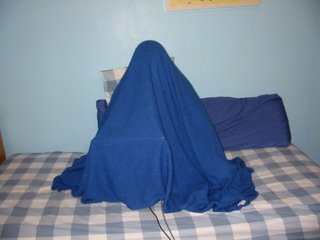Best Nap Ever
Last night, instead of my standard evening television binge, I thought I'd culture myself with the two-disc DVD set of the movie — er, I mean, the film — La Dolce Vita. I had never seen any of Fellini's psychedelically incomprehensible neo-symbolist work before, and I don't enjoy being culturally illiterate, so this was more or less inevitable. Now, I've taken Film 101, so I was totally prepared to not be entertained, but I couldn't have imagined how amazingly dull Fellini is. La Dolce Vita is a three-hour examination of the empty, decadent lives of Rome's fading celebrities and aristocracy, although people who like to read into things also see it as an allegory of the seven deadly sins or the corrupt Italian political system. I was just trying to puzzle through the all-important question: why did someone think it was necessary to put this on film?
I never want to be one of those deficient assholes who looks forward to shelling out ten bucks for a Michael Bay movie, but it's stuff like La Dolce Vita that turns "arthouse" into a four-letter word. What passes for its plot is a tabloid journalist running from one lavish party to another, and since it takes place in the sixties and everybody's high, each party has its own special interpretive dance number set to the standard B-movie acid jazz soundtrack. So you're not watching it to see what happens or to identify with the protagonist's growth; you're watching La Dolce Vita because you sort of skimmed this article on Fellini that your film professor gave you to read and now you've got to write a fifteen page paper on the word "Fellini-esque." Every now and then you think, "So each episode really does begin at dusk and end at dawn. Very clever, Federico. You prove a most worthy adversary."

0 comments:
Post a Comment